|
BULB LOG 16 --- 16th April 08

Tulipa montana
My recently acquired Tulipa montana is now in flower and what a colour it is - it has to be one of the brightest reds in the bulb world. It was one of the many tulip species that I saw growing in a field in Holland a few years ago which I was very attracted to and I made a list of the ones I wanted to try - this desire was much reinforced by the publication of Richard Wilford's book 'Tulips'. I am pleased to say that I am slowly managing to track down the ones I would like to grow. I am not alone in saying that digital photographs sometimes show us details that we failed to observe in the life and the eagle eyed readers will already have noticed the aphids at the bottom right hand side of the flower. This is a timely reminder to check the rest of the bulbs for aphids and if necessary I will spray with an insecticide - this small community was simply wiped out.
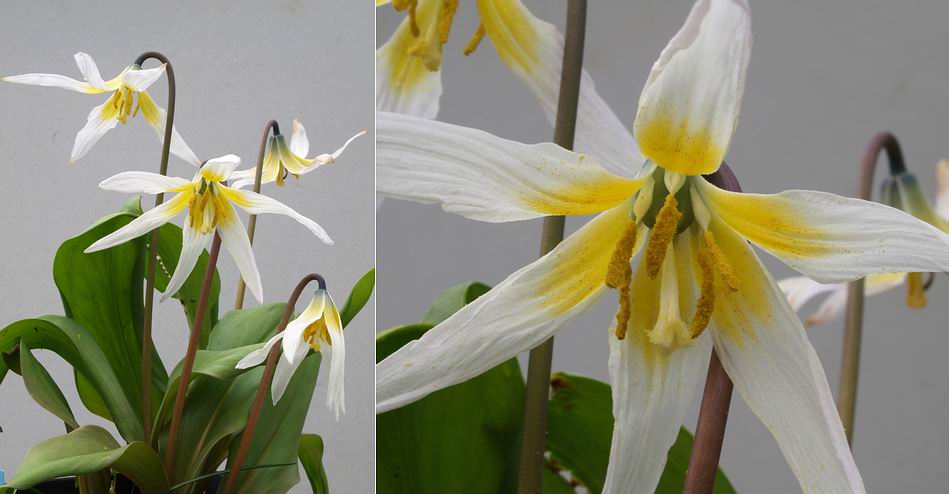
Erythronium sibericum ssp altaicum
The beautiful white Erythronium sibericum ssp altaicum was described by Janis Ruksans in his book 'Buried Treasures'. Before elevating it to a sub species he had previously distributed it as 'Altai Snow' but he points out that it is fertile and he increases it by seed so it is not a clone and there will be some variation in the plants including a pink tinge towards the ends of the petals in some forms. It is not easy to get the best out of Erythronium sibericum in our climate as there is a tendency for the flowers to mature under ground. This is typical of bulbs that are used to being in very cold ground all winter followed by a rapid thaw and warm spring. In our conditions the soil is not cold enough to prevent the flowers from maturing while on the other hand the temperatures are not warm enough to stimulate the stems to grow. To counter this I grow most of them in pots in an open frame and as soon as the tip of the shoot appears I move them into glasshouse. In the warm conditions under glass the stems can
easily grow 5cms in one day and I get the chance to enjoy the flowers at their best.

Narcissus triandrus
To me Narcissus triandrus is one of the gems of the wee daffodils - it is so elegant and graceful I could never have enough of it. Unfortunately I find it some what short lived under my conditions and it is slow to increase vegetativly, so seed is the only way forward.
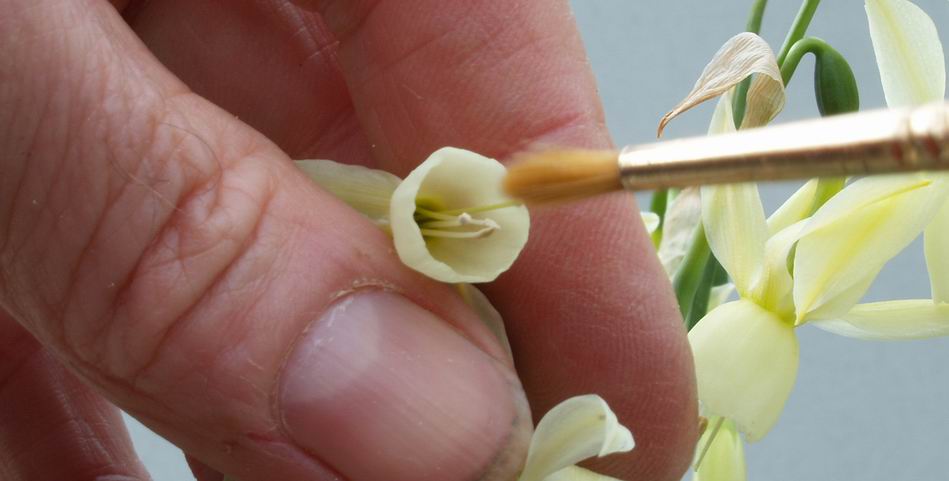
Pollinating Narcissus
To ensure that I stand the best chance of getting a seed set I leave nothing to chance and always pollinate the flowers with a paint brush. I do this over several days because part of the plants strategy to prevent self fertilisation is that the pollen and stigma do not always ripen at the same time.
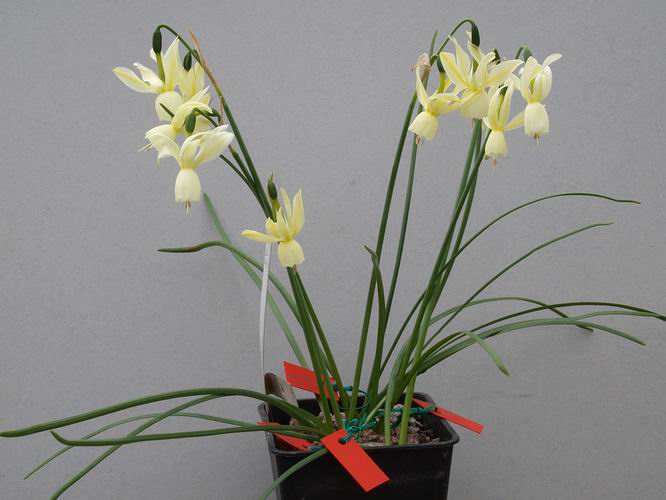
Hybridising narcissus
Narcissus triandrus is also very promiscuous and will cross with many other Narcissus which has resulted in many fine hybrids. I have made a number of hybrids using Narcissus triandrus as the seed parent and I have again crossed this potful with a number of compatible species such as N. rupicola and bulbocodium also I have tried to back cross it with N. x susannae which is already a hybrid between N. triandrus and N cantabricus. I attach small labels to each flower stem indicating the cross I have made so that I can correctly label any seed that I get. A good indicator I have observed that my cross has been successful is that I never get as many seeds in a pod which has hybridised as I do when it is just the species - one time I am happy to see a small seed count.

Narcissus rupicola ssp marvieri
One of the pollen parents I have used is this good form of Narcissus rupicola ssp marvieri.
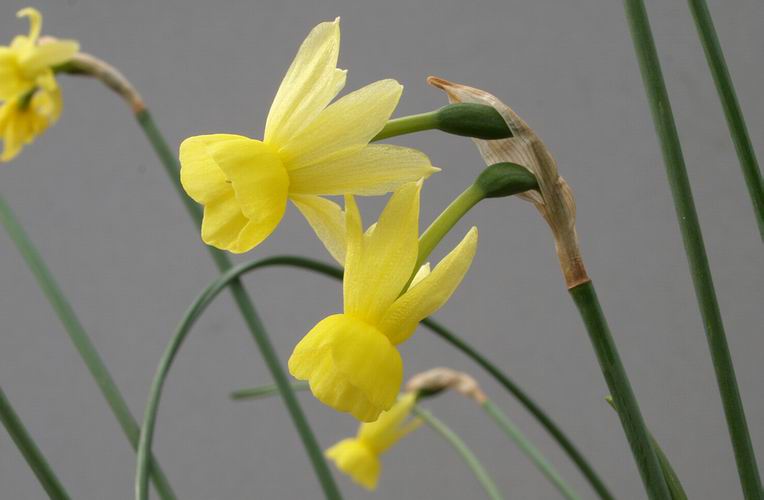
Narcissus x incurvicervicus
Narcissus triandrus also crosses freely in the wild any where it shares a habitat and Narcissus x incurvicervicus is the result of it crossing with N fernandesii.

Fritillaria 'Craigton Cascade'
One of the frits that I have named is Fritillaria 'Craigton Cascade' which I suspect is a cross between F recurva and affinis. It is a very beautiful plant that can have as many as eleven flowers on a cascading stem. Because I cannot be sure of the exact parentage and that it was being widely distributed by the freely produced rice grains I chose to give it a cultivar name.

Fritillaria grandiflora
I raised this plant from seed as Fritillaria kotschyana but I think it is Fritillaria grandiflora. I have this same plant from other sources and I put it to the Joint Rock Garden Plant Committee as Fritillaria grandiflora; they gave it a PC but called it Fritillaria kotschyana grandiflora which annoyed me as I think that they are two distinct species. If you are , in the Fritillaria pages of the forum, Tony Willis shows this plant as Fritillaria kotschyana which he acquired from Dieter Zschummel - Kiev Botanic Garden was the source of the seed. I have since seen other plants labelled F.kotschyana grandiflora which to me look like a large version of kotschyana- this plant is different.

Fritillaria kotschyana
Here is Fritillaria kotschyana do you think it looks the same? I do believe that there is confusion here and that we are looking at two different plants being given the same name.

Fritillaria acmopetala wendelbowii
Talking of confusion in plant names, Diane Clements put a beautiful frit up to Joint Rock a few weeks ago as Fritillaria acmopetala wendelbowii - but it was clearly not that species at all. I suspect that Diane's plant, which can be seen in the Blackpool Show thread on the forum, is closer to F crassifolia but I would need to pull a flower apart to tell and I don't think she would have been too happy about that. This is Fritillaria acmopetala wendelbowii which I got from Gothenburg Botanic Garden and it is a distinct and very attractive form of the easy and common F. acmopetala.
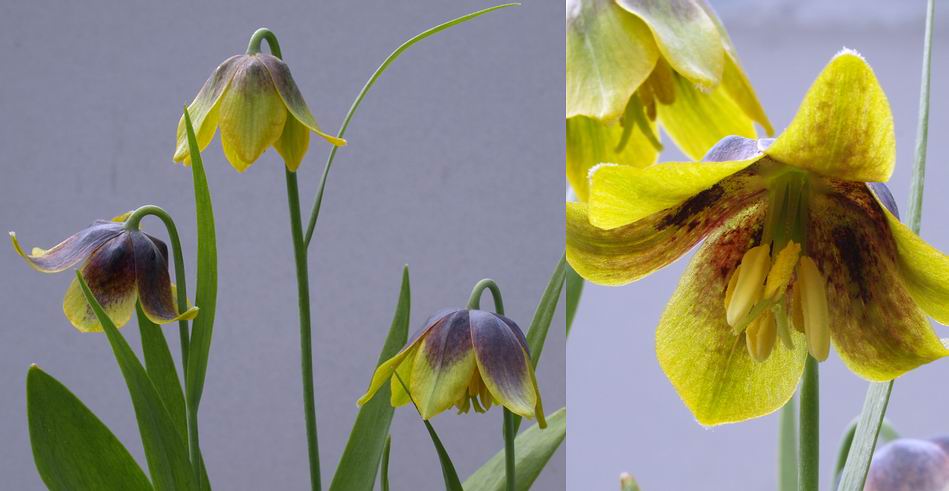
Fritillaria rhodocanakis
A frit that has similar colouring to F. michailovskyi is Fritillaria rhodocanakis but you could never mistake these two species. Fritillaria rhodocanakis has much more open, flat faced flowers. Again you will notice the slight variation in the colour of these seed raised plants.
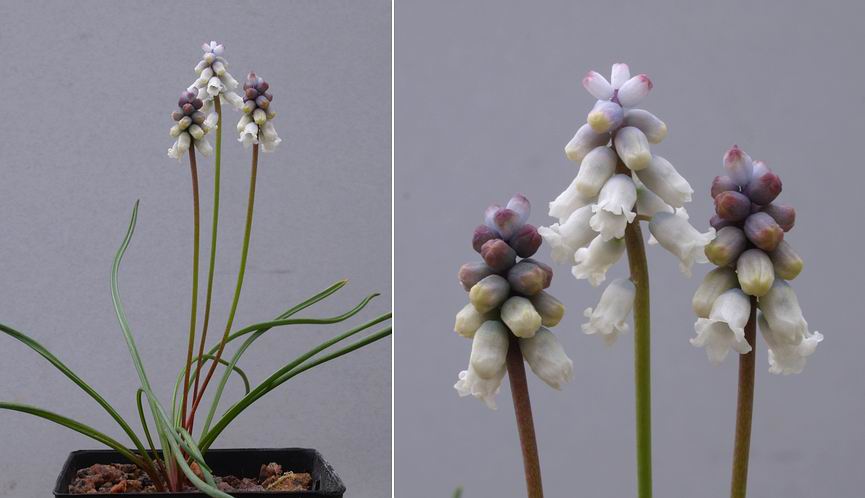
Muscari mcbeathianum
Another nice dwarf bulb is Muscari mcbeathianum - it is on a similar scale to the unknown species I got from Arthur shown last week. Just to show the power of the internet I have been told by my friend and great bulb man Luit van Delft that he has been told that Arthur's muscari is M. anatolicum. Also referring to last week I do know the difference between a muscari and a hyacinthella but I just became careless and mistakenly called Hyacinthella libanoticum a muscari - I can get away with nothing here:-)

Tristagma leichtlinii x2
I raised this pot of Tristagma leichtlinii from Fern and Watson seed sown in February 1996. I do not know if this is still the correct name, there seems to be a lot of changing around of the names in the South American bulbs.
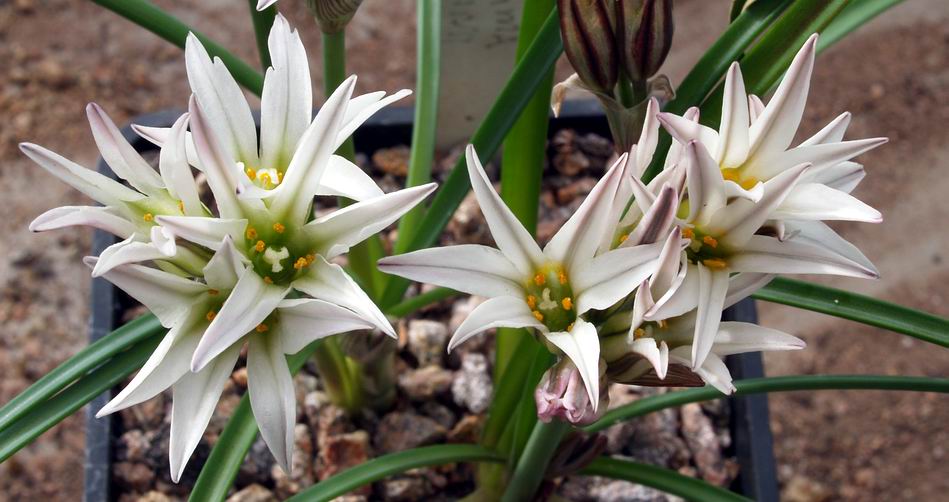
Tristagma leichtlinii
It is a pretty bulb which, while it does not increase rapidly from the bulb, grows well and sets good seeds most years so I have a number of pots coming on.
^ back to the top ^
|

